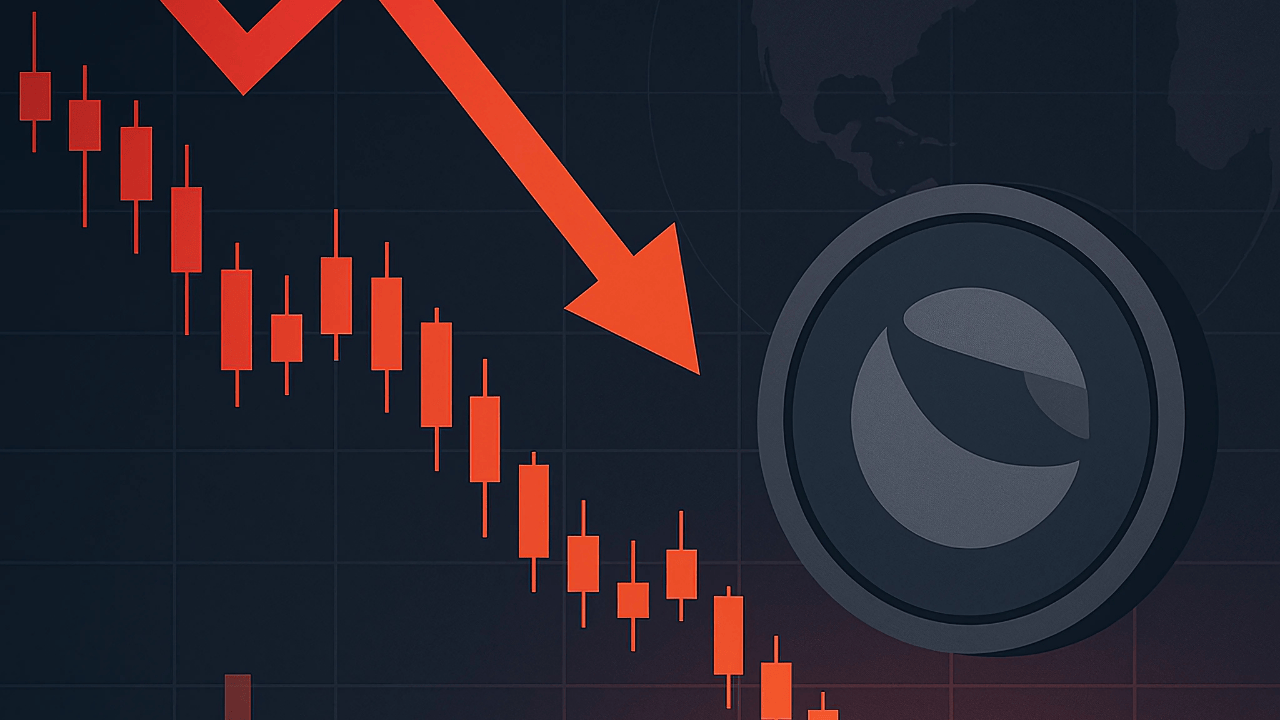The cryptocurrency market has faced a significant downturn in recent days, driven by renewed geopolitical tensions and the announcement of new U.S. tariffs. As a result, Bitcoin dropped below $75,000, while major altcoins such as Solana (SOL) and XRP fell by more than 20 percent. Although less publicized, Terra Classic (LUNC) has also been affected by this broader market volatility.
LUNC Under Pressure Amid Market Decline
While LUNC has not experienced the same level of media coverage as top-tier cryptocurrencies, it remains closely tied to overall market sentiment. The recent dip in prices across the board has triggered a decline in LUNC’s trading volume and price stability. Investors are now watching closely to see if the token can hold key support levels or whether a deeper correction may follow.
Terra Classic, a community-led continuation of the original Terra blockchain, has remained resilient due to its grassroots development and decentralized governance. However, heightened volatility often reduces risk appetite, especially for smaller-cap projects like LUNC.
Regulatory Developments: Potential Impact on LUNC
At the same time, ongoing legal and regulatory activity is shaping the landscape for all digital assets. A Nigerian court recently postponed Binance’s tax evasion trial to April 30, raising questions about the legal exposure of centralized platforms in emerging markets. In the U.S., lawmakers are reviewing a bill that could allow stablecoin issuers to pay interest to users, a move that may signal greater regulatory acceptance of tokenized assets.
These developments could affect LUNC in two ways:
Decentralization Advantage: Increased scrutiny of centralized platforms may drive users toward decentralized ecosystems, where projects like LUNC could gain traction.
Access and Liquidity Risk: If exchanges are pressured to limit access to tokens lacking clear regulatory status, this could reduce LUNC’s availability to global traders.
A Renewed Focus on Stablecoins
The U.S. regulatory focus on stablecoins may also renew interest in USTC, Terra Classic’s algorithmic stablecoin. While USTC has struggled to regain its peg since the 2022 collapse, ongoing discussions about legalizing interest-bearing stablecoins could create opportunities for innovation within the Terra Classic ecosystem—if managed responsibly.
Outlook for LUNC
Despite the challenging environment, the LUNC community continues to advance development efforts, including decentralized applications, governance upgrades, and ecosystem initiatives such as staking and metaverse integration. While short-term sentiment may remain cautious, long-term supporters are closely monitoring progress as the network evolves.
Conclusion
Global economic uncertainty and regulatory shifts are testing the resilience of the entire crypto market. For LUNC, the path forward will depend on the project’s ability to maintain community momentum, adapt to legal standards, and explore new use cases that strengthen its position in a rapidly changing environment.

